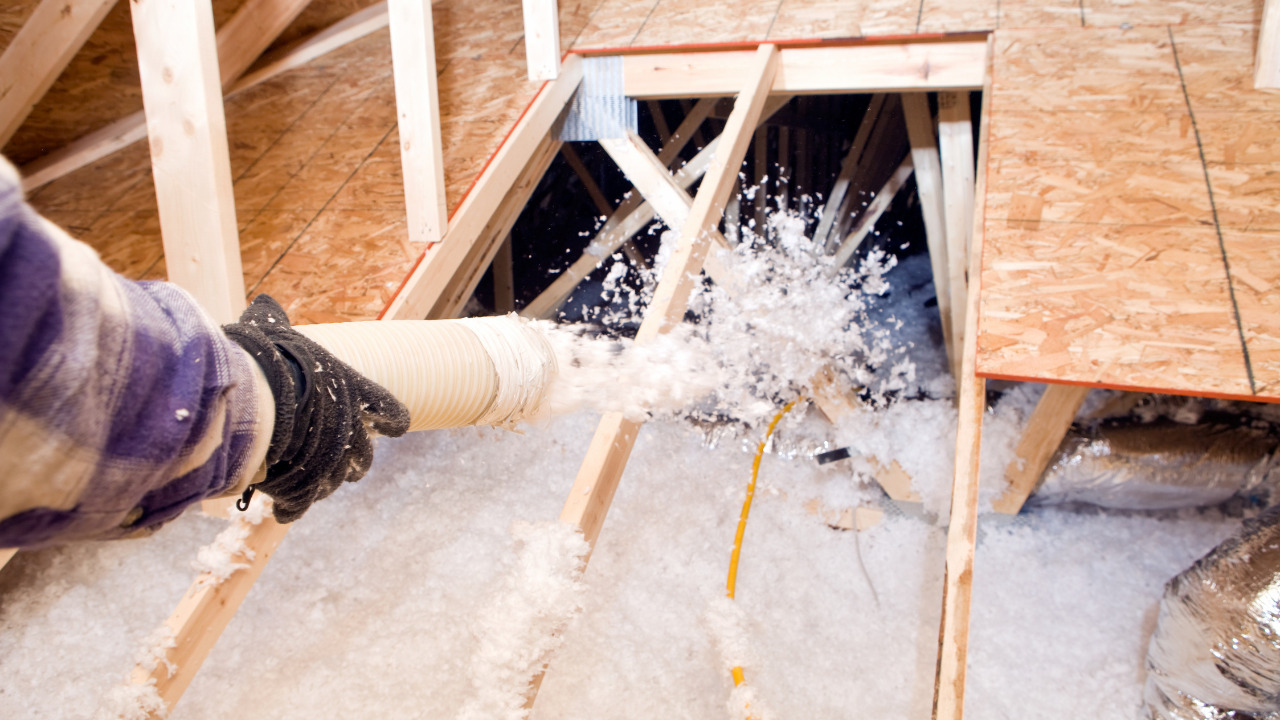Although people are interested in insulating their homes, not only because it is sometimes required but also because they are becoming more aware of the importance of having a well-protected and sealed home, they frequently overlook the importance of replacing their insulation from time to time.
Specifically, regardless of how effective or long-lasting an insulation material is, if it is not correctly installed, it will not only do little for you and your home but will also have certain undesirable impacts.
As a result, knowing how to install insulation isn’t enough. You also need to know how to remove and replace it. The remainder of this section is devoted to removing ceiling and loft insulation.
Table of Contents
A Few Things To Consider Before Removing Rockwool Insulation
The removal of attic insulation can be a nasty and time-consuming task. It’s a good thing you came to our article for advice on how to complete this task more quickly and easily. There are various reasons why homeowners should be concerned about their insulation.
Because of airborne infections and pollutants, rodent infestations or water damage frequently necessitate insulation removal. Mold can grow on wet insulation, which can lead to structural issues. Insulation that has been altered or destroyed might result in inefficiencies and cost the homeowner money in energy bills.
Preparation is crucial when it comes to removing attic insulation safely. The job will be much easier, and you will avoid costly blunders if you plan ahead of time.
Not only will removing old insulation and replacing it with new ones rid your home of rodent infestations and mold, but it will also enhance its energy efficiency and general air quality. It’s critical to take action as soon as you see signs of deterioration and begin arranging for insulation removal.
Steps To Remove The Rockwool Insulation
It’s crucial for various reasons, whether you installed it yourself or just bought an old property and have no experience with insulation. First and foremost, consider why you chose to install insulation in the first place.
The answer is to keep your home warm in the winter and cool in the summer, isolate yourself from outside noise, deal with moisture and condensation issues, and save money on electricity costs.
1) Clear The Targeted Area
The first step in ensuring that removing insulation from your attic is safe is to ensure that the space is free of all contaminants. Do not attempt to remove any insulation unless you are certain there is no asbestos. A home improvement store can sell you a testing kit or hire an inspector.
Insulation samples may need to be sent to a lab for testing. If there is asbestos in the insulation, you will need to engage a professional to remove it and dispose of it correctly.
2) Remove Existing Insulation
It is normally safe to remove attic insulation yourself if there is no asbestos, mold, or rats. It’s easier to remove certain insulation than it is to remove others. Fortunately, homeowners are more likely to find blown-in fiberglass or cellulose insulation. Removing rolls or batting is more difficult, but it is possible.
Any particles that get into the air can be contained by using big rolls of plastic sheeting and taping off portions of your home. Because some attic spaces are small and cramped, inventive ways to move the vacuum about inside the attic will go a long way.
3) Use A Vacuum To Suck The Insulation
Tie a rope to the vacuum if the attic isn’t big enough for a person to maneuver around. As the vacuum sucks up the insulation, slowly draw it toward you.
Use a few spare pieces of wood to make a transportable workstation. It allows you to maintain a safe distance from the remaining insulation while also making it easier to access corners and crevices.
When moving around an unfinished attic space, be cautious. There are usually only a few rafters between you and the ceiling. A misplaced foot, hand, or heavy vacuum can result in inconvenient drywall repairs. Empty the vacuum into a sealable, large, heavy-duty trash bag. You don’t want the insulation to come free and float all over the place.
Find recognized recycling or waste management center to dispose of old insulation. Local rules may limit how fiberglass or cellulose insulation can be disposed of acceptably.
4) Recycle The Fibreglass Insulation
Fiberglass insulation can be recycled and used to manufacture new insulation in some cases. Look for a fiberglass manufacturer in your area. The fire retardants placed on cellulose insulation prevent it from being recycled.
Make sure you’ve done your homework and know where the insulation will go once it’s been removed. Before you decide to handle attic insulation yourself, you should consider it again.
When putting new insulation in your attic, you may encounter a variety of concerns, such as a rodent infestation or dangerous materials. In these cases, the specialists will know what to do, and you’ll get professional outcomes.
Conclusion
At first, glance, removing attic insulation appears to be a straightforward task. However, it is not always a simple task and can cause various issues for homeowners. If the task becomes too difficult, don’t be scared to seek professional assistance.
When outdated attic insulation is removed and replaced, it improves your home’s energy efficiency while protecting you and your family from dangerous things like rodent contamination and mold.
There could be harmful items in your attic, ranging from fiberglass insulation to asbestos. It’s simple for homeowners to ignore these materials because they aren’t used to being cautious of them. When asbestos isn’t disturbed, it’s completely safe. However, you might disturb it when putting your insulation.





